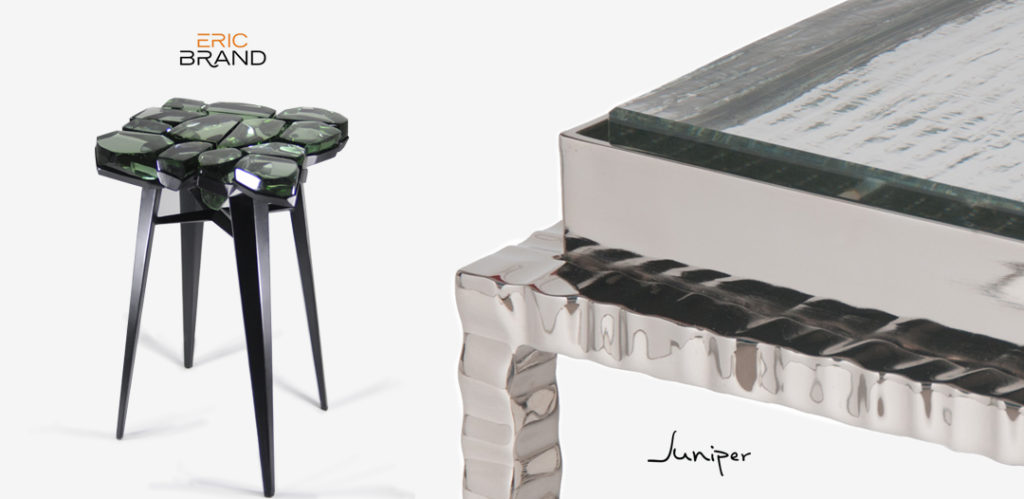The Delicate Beauty of Casted Glass
There is perhaps no design material more delicate and more beautiful than glass. Coming in an array of colors and opacity, glass can accent or dominate any piece it’s apart of. One of our favorite applications for this material is casting – in which objects are shaped by directing molten glass into a mould where it solidifies.
One fine example of casted glass can be found in our J17 Side Table – a functional staple composed of brass and thick, wavy cast glass.
Utilized as far back as the ancient Egyptians, the casted glass process is now employed in several modern techniques, including Sand Casting, Kiln Casting, and Pâte de verre Casting.
Sand Casting
Sand casting involves the use of hot molten glass poured directly into a pre-formed mould, much in the same way metal casting is achieved. The sand mould is typically prepared by using a mixture of clean sand and a small amount of absorbent clay bentonite for binding material. These materials are well mixed and sifted before being added to an open-topped container. A template is prepared which is tightly pressed into the sand to make a clean impression, which then forms the mould. During the pouring process, glass or compatible objects may be placed to later give the appearance of floating in the solid glass object – an undoubtedly eye-catching effect.
Kiln Casting
Kiln casting involves the preparation of a mould, which often consists of a mixture of plaster and refractory materials such as silica. A model can be made from any solid material, such as wax, wood, or metal, and after taking a cast of the model (a process called “investment”) the model is removed from the mould. One method of forming a mould is by the Cire perdue or “lost wax” method. This type of cast work can be used to create very large, attractive pieces.
Pâte de verre Casting
Pâte de verre is a form of kiln casting and means “glass paste.” In this process, finely crushed glass is mixed with a binding material (gum arabic and water, for example), and often with colourants and enamels. The paste is then applied to the inner surface of a negative mould which forms a coating. After the coated mould is fired at the right temperature, the glass is fused creating a hollow object that can have thick or thin walls depending on the thickness of the pate de verre layers.
Starphire / Water Clear Glass
Each method of casting glass produces a variety of aesthetic results. One of our favorite type of casted glass is “Starphire” – otherwise known as low iron glass or water clear glass. What makes this type of glass unique is its clarity. When standard glass is produced, iron oxide leaves a greenish tint to the edges. The low iron Starphire glass is very clear, hence its nickname “water clear.”
A fine example of this can be seen with our J70 Glass Side Table, with its Starphire thick tempered glass top.
Since this type of glass is slightly more expensive than standard glass, and is only apparent along its edges, it’s best suited for frameless applications like shower enclosures, tabletops and glass doors – where the clarity can really be appreciated.
________________________________________________
ERIC BRAND
Founded in 1996 and based in San Francisco, Eric Brand offers custom-styled furniture and worldwide sourcing along with exquisite materials and finishes, specifically for the high-end residential design market and hospitality industry.
JUNIPER
Named after the fog-licked Juniper trees on the hills of San Francisco, Juniper is an in-stock furniture collection by Eric Brand that pays homage to timeless materials, techniques and silhouettes – brought to life through expert craftsmanship.
